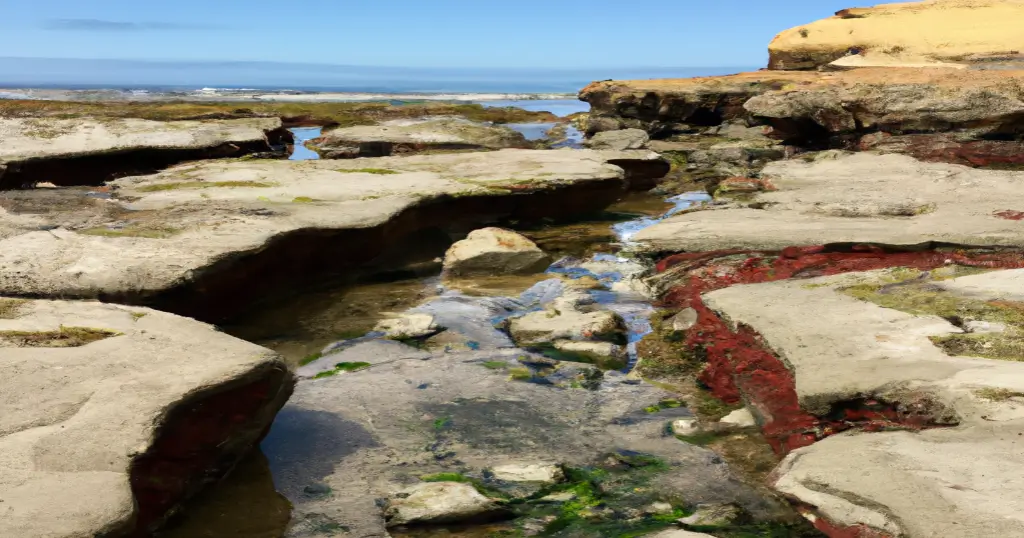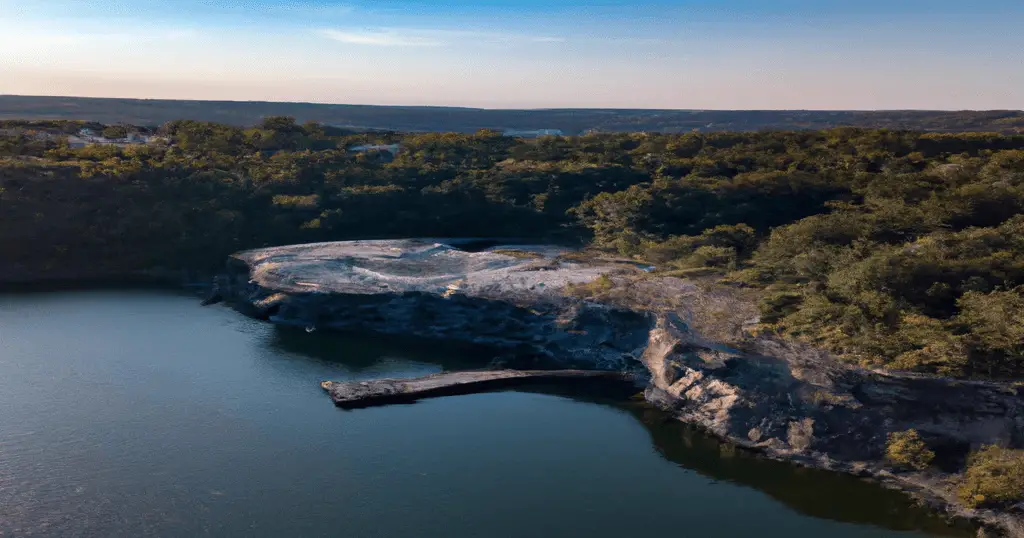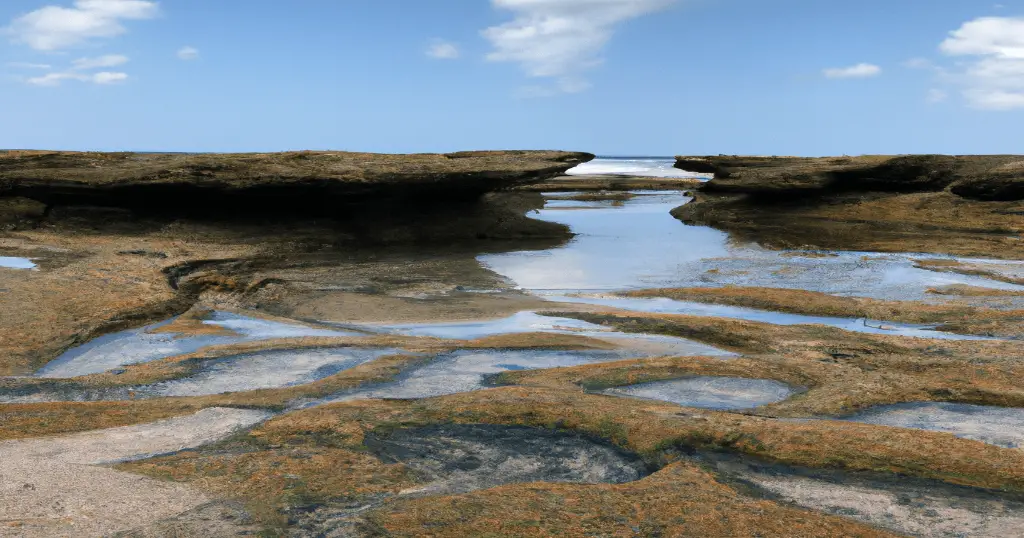Over 350,000 people visit the rocky tide pools at Point Loma near the Cabrillo National Monument in San Diego every year. Needless to say, there are strict rules in place to preserve the corals and animals living in these tide pools from the enormous amount of human interference. This post is meant to provide an overview of all these rules to help you make the most out of your visit to these natural wonders!
Don’t let all these rules deter you from visiting. The Point Loma intertidal zone is exceptionally large and extremely diverse, teeming with marine life in each nook and cranny!
What to see
The tide pools on the western side of Point Loma provide fantastic insights into the diverse ecosystem that flourishes along the Californian coast. During low tide, pools are left behind between the outcrops, filled to the brim with a variety of unique sea animals. In contrast to other smaller tide pools around the West Coast, these are protected by the National Park Service, making the biodiversity here unique.
Keep an eye out for these critters
Many of these animals are camouflage experts, so really take your time to explore these tide pools, and don’t rush your visit. Amongst others, you may encounter:
- Sea anemones of seemingly all colors
- Starfish bigger than your palm
- Shore Crabs
- Sea urchins
- Octopi
- Dead man’s fingers
- Nudibranchia
- California sea hares
- Troglodyte chitons
- Periwinkle snails
- Lobsters
The three zones of the Point Loma Tide Pools
The entire intertidal zone can be divided into three zones. Each zone is inhabited by different animals and plants. Some animals move in between zones. In order to explore all zones, you must visit during low tide.
The low zone
The low zone is primarily inhabited by colorful mollusks and crustaceans. Keep an eye out for these animals:
- Starfish
- Nudibranchia
- Lobsters
- Sea urchins
- Sea hares
- Octopi
This zone is only available during low tide. For us, the animals here were jaw-dropping, so we really recommend you time your visit right.
The middle zone
This middle zone is home to the biggest diversity of critters and teeming with plant life. You may be able to add the following to your Pokédex:
- Giant Keyhole limpets
- Black Telugu snails
- A dozen different types of anemones
- Sandcastle worms
- Kellet’s whelks
- Surf grass
- Sponge weed
- Red algae
- Barnacles
- Crabs
The high zone
The high zone is the furthest from the water and is one of the hardest zones to live in for marine animals, as it is only occasionally splashed with water. Hence, it is also called the splash zone. Animals have to deal with long sun exposure, high salt levels, irregular moisture levels, and higher temperature. Therefore, you will likely encounter resilient crustaceans and shell-type animals, such as:
- Limpets
- Mussels
- Chitons
- Barnacles
- Crabs
While barnacles may look resilient, please avoid stepping on them. They are trying their best to survive until high tide.
Besides all these flamboyant organisms, the geology of tide pools is also unique and interesting to explore. Educate yourself beforehand on how tide pools are formed in order to make your visit more interesting.
How to prepare
Bring your Camera
While the tide pools themselves may not seem picturesque, their inhabitants are as photogenic as it gets and rarely shy away from striking poses for the camera. We highly suggest you bring your camera, as photographing through the water surface with a smartphone with autofocus enabled is rather difficult. If you have a macro lens, screw it on right now so you don’t forget it later!
Wear the right clothes and shoes
Decent footwear is the most important factor that can make or break a tide pooling adventure. The rocks surrounding the tide pools can be razor-sharp and slippery at the same time. We highly recommend closed-toe shoes with good gripping soles that are either waterproof or can be machine-washed. Thus, you should opt for hiking boots or anti-slip water shoes if you want to get your toes wet. Avoid wearing sandals, flip-flops, or going barefoot at all costs.
Bring kids
Even if you don’t have kids yourself, ask your distant nieces and nephews or your co-workers’ kids if they want to tag along. Tide pooling at the Point Loma Tide Pools is an educational outdoor experience. It is a unique hands-on experience that trains your physical coordination and teaches you about geology, biology, and the fragility of the ecosystems surrounding our urban environments.
Remember to hold hands with smaller kids at all times, as the child’s over-excitement can result in a fall rather quickly.
Beware of these rules
As we mentioned before, the ecosystem at the Point Loma Tide Pools is extremely fragile. Coupled with the high number of annual visitors, it is no surprise that there are many rules to follow. Minimizing human impact is crucial if we want the Point Loma Tide Pools to be an immersive, educational adventure for generations to come.
Here are some of the rules that are either enforced by the park or part of the common-sense etiquette regarding tide pooling:
- Throwing rocks or any other items is prohibited. Not only can their fall into the water damage the ecosystem, but the continuous currents of the tide will move the rock around and essentially grind down coral and algae that is vital to the survival of other sea creatures.
- Some critters can be touched gently, but it is recommended to refrain from engaging with the animals. It is best to consult the park ranger on-site regarding this rule.
- Collecting organisms (dead or alive), shells, rocks, corals or algae is completely forbidden and can result in large fines.
- Animals intentionally moving away from people or seeking a hiding space should be left alone.
- The following are also prohibited. If you bring them along, the rangers will refuse you entry to the tide pools:
- Alcohol
- Camping
- No pets
- No glass containers
- Motor vehicles beyond the parking area
- Smoking is also prohibited
- Any tools that can be used to relocate or steal animals from the park, such as shovels, spatulas, boxes, screwdrivers, nets, knives, buckets, or cups.
Organize transportation beforehand
You have to arrange your transport to and from the tide pools and set a pick-up time if you hire a driver, as there is no cell phone signal at the tide pools. Since you also won’t have mobile internet, it may be useful to download an offline Google map of the Point Loma Peninsula around the Cabrillo national monument.
Add some buffer time to your itinerary to account for a potential delay
The road to the tide pool area is often closed if the area reaches its capacity. Visitors frequently have to wait 30 minutes until parking spots are available again. So make sure you are not on a tight schedule that day.
Visiting with 10+ people?
Due to the aforementioned capacity limitations, groups of 10 or more are asked to request a Tide Pool permit from the national park service. This rule is especially enforced during the low tides, i.e., peak hours.
When to visit
As with any tide pooling adventure, timing is crucial when visiting the Point Loma Tide Pools. You will want to visit during low tide and preferably when there are few other visitors stumbling across the rock formations.
The ideal season
Late October to February is the best time frame to explore the Point Loma Tide Pools. As the negative low tide (the most interesting one) occurs during the opening hours of the tide pools. During the summer, the low tide happens at night when the park is closed.
The ideal time of day
Find out when the low tide will be on your planned day of visit using the forecast here. And try to visit within 2 hours before or after the low tide for the best experience. Also, keep in mind the opening hours of the tide pools. While the Cabrillo National Monument is open from 9 am to 5 pm, the tide pools close at 4:30 pm.
How to get there
Many people plan to spend half an hour until curiosity gets the better of them, making them stay all afternoon. Therefore, we recommend renting a car or a private driver, as it allows for flexibility.
Driving there by car
You can reach the National Monument from Interstate 8 by following Nimitz Boulevard south and turning right on Chatsworth Boulevard. Afterward, you have to turn left on Catalina Boulevard and continue straight for around 3 miles. There will be a sign indicating the entrance to the tide pools on the right-hand side.
Parking is ample, but as mentioned, the parking lot sometimes reaches its capacity on busy days, resulting in delays. At the parking lot, you may encounter an official park ranger or helpful volunteers that will not hesitate to answer all of your questions regarding the tide pools.
Riding the bus
Every hour during the week, the San Diego Transit System runs a bus transfer between San Diego and the Cabrillo National monument. Unfortunately, these buses will only take you to the visitor center. From there, you will have to hike for around a mile to reach the entrance of the tide pools.
Booking a trip through a tour company
There are also tour operators in San Diego that offer half-day trips to the tide pools. However, we do not recommend this option, as they don’t provide much added value besides the transport itself. You might as well use a ride-sharing app, which is cheaper and equally convenient.
Entrance Fee
Entrance to the National Park costs $15 per motorbike and $20 per car. Visitors arriving by bike or walking will have to fork over $10 per person. Groups or families of up to four people will only have to pay $20 in total.
We recommend you do not cheap out on the parking fee by walking down Cabrillo road. The road is narrow and has some sharp turns, which makes it difficult for drivers to dodge hoards of pedestrians.
Additional information about the Point Loma Tide Pools
- If you had to cancel your visit to the tide pools due to unforeseen circumstances or want to know what you can expect from your visit, take this virtual tour of the tide pools.
- You can embark on a beautiful but short 1-mile coastal hike that starts at the tide pool entrance. There are also many other family-friendly hiking trails nearby that provide stunning ocean views of the national park area.
- Why not visit the Sunset Cliffs Tide Pools nearby? They may not be as spectacular as the Point Loma tide pools, but are home to a colorful variety of red and brown algae and also doubles as a renowned surfing spot.



